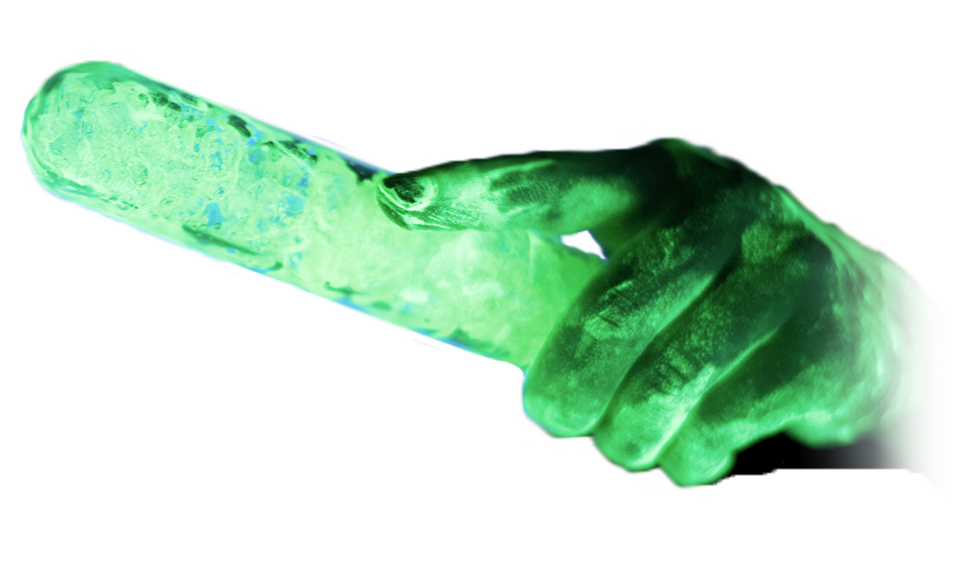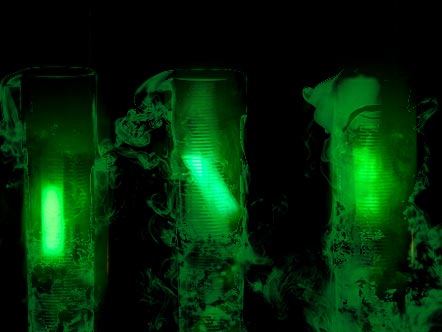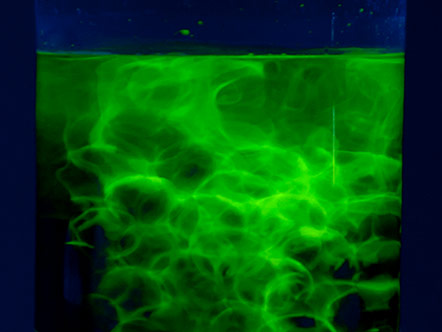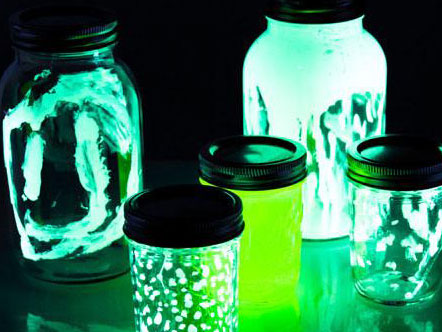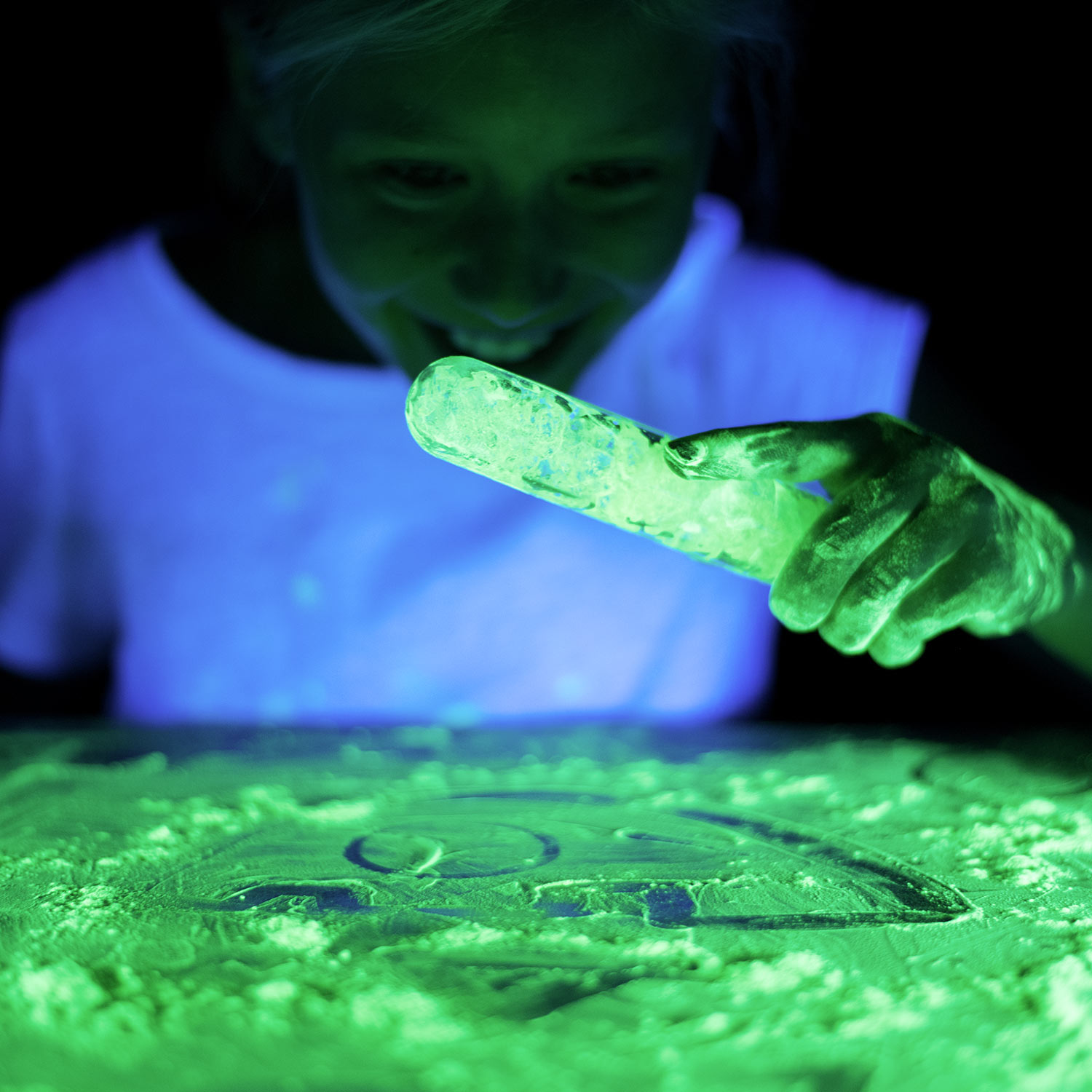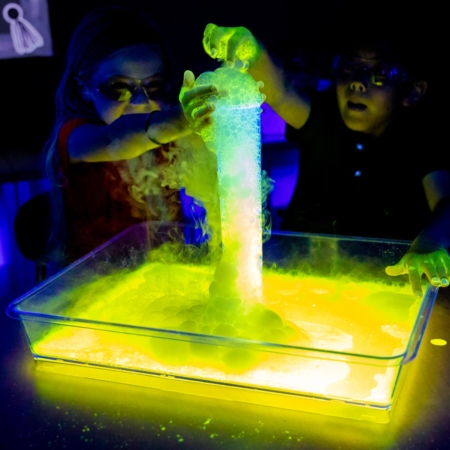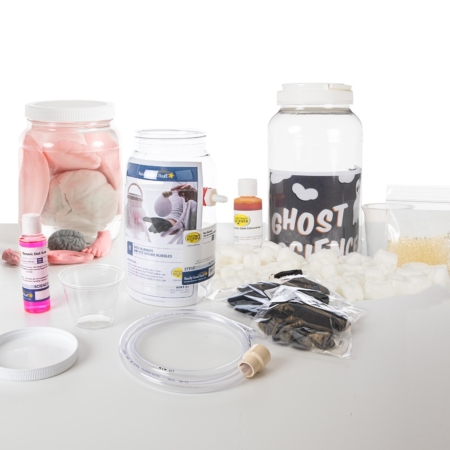Before you get started, you must understand the difference between the Zinc Sulfide Glow Powder and Atomic Glow Concentrate, or the terms fluorescence and phosphorescence.
It’s also important to note that not all zinc sulfide glows, but luminous zinc sulfide does glow!
Fluorescence
This type of luminescence occurs when some form of radiation, such as light, causes an object to glow. For example, fluorescent papers and poster boards glow in the daylight. They glow even brighter under black light (ultraviolet light). Ultraviolet light is a component in sunlight. Ultraviolet wavelengths are very long with a very high frequency and can be used to detect fluorescent material that would remain invisible under normal conditions. When you shine ultraviolet light on fluorescent material, it lights up with a beautiful bluish-green luminescence.
In either case, as soon as the light is removed, the glow stops. Fluorescent things do not glow-in-the-dark all by themselves – they require some other form of energy such as ultraviolet light to “excite” them.
Under normal light, Atomic Glow will turn water a cool greenish-yellow color. Under a black light, the goo actually glows an eerie green color. Atomic Glow is fluorescent and needs a black light to make it glow.
Parents – also note that Atomic Glow will stain.
Phosphorescence
Phosphorescence is just like fluorescence, except that the glow continues even after the light used to excite it is removed. “Glow-in-the-dark” toys phosphoresce brightly in total darkness after being “charged” or excited by ordinary white or ultraviolet light. Glow Powder works by absorbing surrounding light energy and then releases that energy when the lights go out. It’s called a phosphorescent.
So, how does zinc sulfide work? Imagine that an atom looks something like our solar system. The sun would be the nucleus consisting of positive charges called protons and neutral charges called neutrons. The planets spinning around the sun would be similar to the electrons of an atom in orbits around the nucleus.
When the electrons in the atoms of special molecules like zinc sulfide become excited, they move farther away from the nucleus — into higher or more distant orbits. In order to become excited, the electrons must take on energy. In this case, light provided the required energy to cause the electrons to move to a higher energy level. It’s as if Earth were to move farther away from the sun into the orbit of Mars or Jupiter.
The electrons will remain in the excited state as long as they receive light to energize them. But, when the light used as an exciter is removed, the electrons will slowly return to their original lower orbits. As they do so, they give up the energy that excited them in the form of light.




